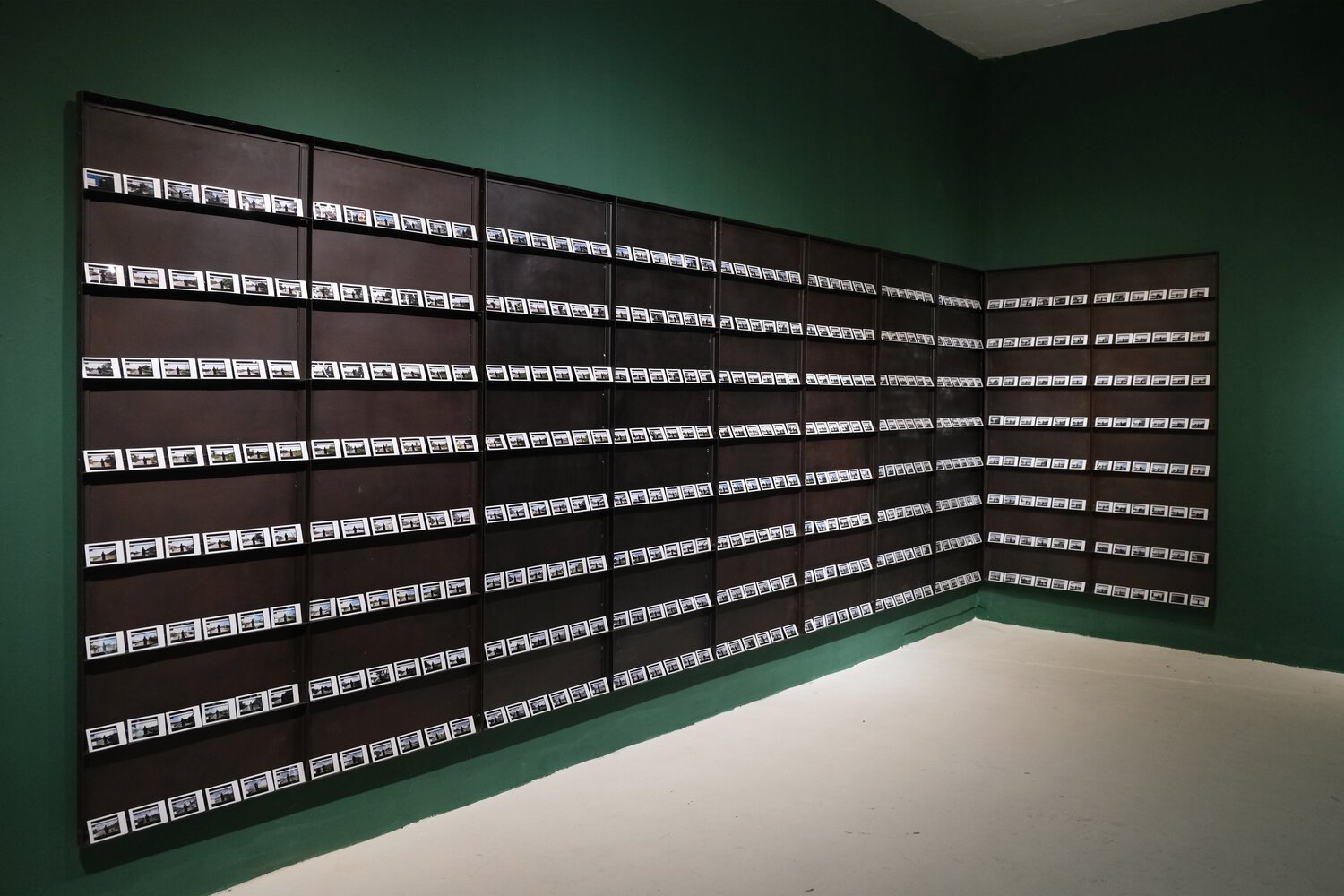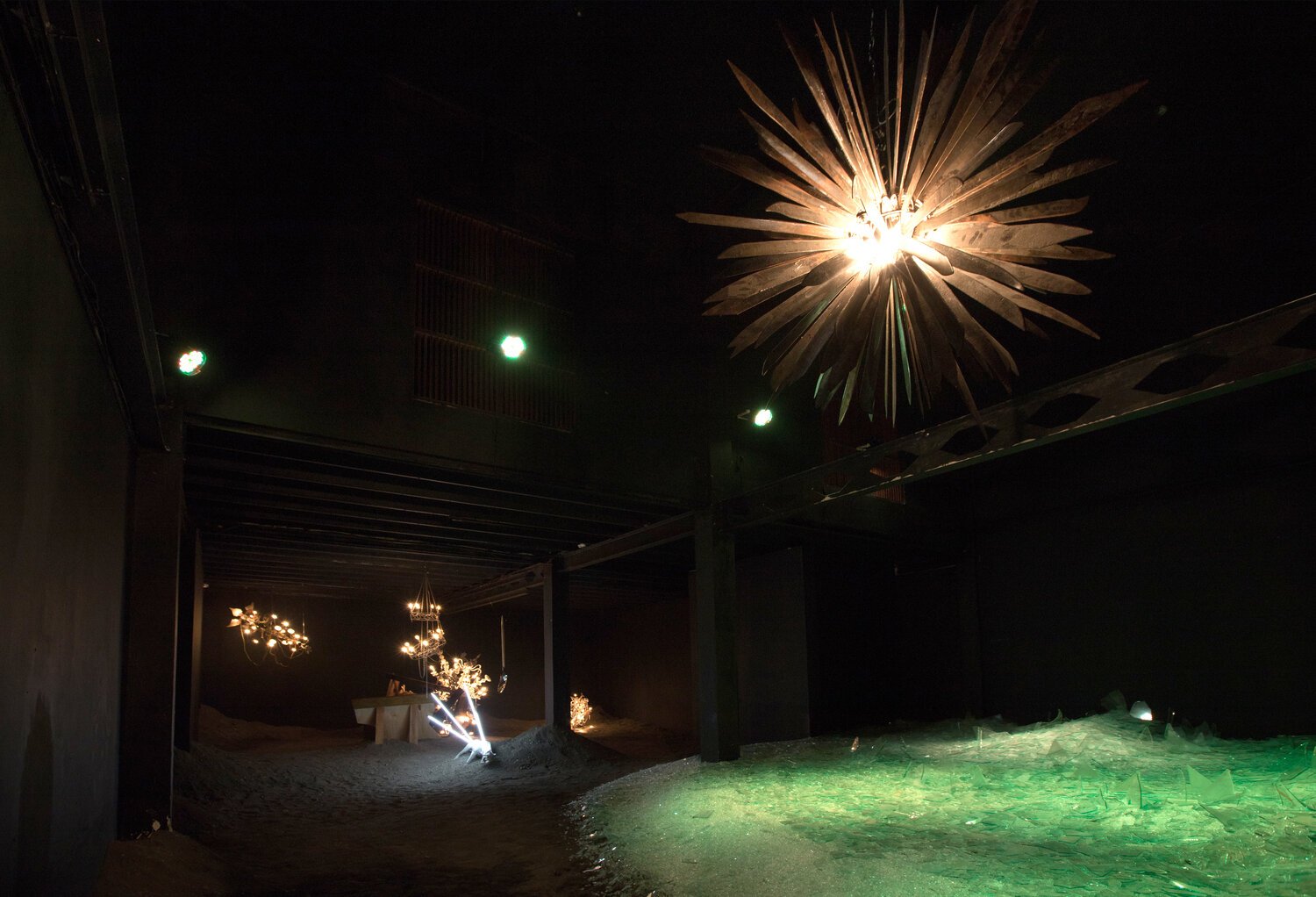ARTJOG MMXXI Preview
Contemplating the multiplicity of time through art
By Alana Malika
Jompet Kuswidananto, ‘Love Is A Many Splendored Thing’, 2021, glasses and sand, variable dimensions. Image courtesy of the artist and ARTJOG.
The 14th edition of ARTJOG MMXXI returns at Jogja National Museum from 8 July to 31 August 2021. Despite initial plans to allow onsite visits, PPKM Darurat was implemented in Java and Bali days before the event’s opening which put stringent restrictions on public gatherings due to a steep rise in cases within the region. ARTJOG will proceed with an online format until the conditions of the pandemic improve and public health restrictions are lifted. This year, the event will feature 41 individual and group artists that are based in Indonesia.
Curated again by Agung Hujatnikajennong and Ignatia Nilu, ARTJOG MMXI is the second iteration in the ‘Arts in Common’ trilogy under the theme ‘Time (to) Wonder’. Following last year’s theme ‘Resilience’ which featured works that responded to the pandemic, this year’s fair showcases works that contemplate time as both an universal and subjective experience. Commenting on its aim, "Time (to) Wonder is an invitation to the artists to redefine time through their works and thoughts," said Hujatnikajennong.
Jompet Kuswidananto, ‘Love Is A Many Splendored Thing’, 2021, glasses and sand, variable dimensions. Image courtesy of the artist and ARTJOG.
After a hiatus last year, ARTJOG returns its traditional hallmark commission with Yogyakarta artist Jompet Kuswidananto’s ‘Love Is A Many Splendored Thing’. The site-specific installation confronts the relationship between time and history without directly referencing a specific event. Kuswidananto questions prevailing historical narratives that glorify victory and romanticise struggle. The space is filled with mounds of sand and glass shards reflecting light, resembling twinkling waters in a beach horizon. This effect is meant to capture the ocean’s illusion of infinity by expressing the vast uncertainties of time, symbolising the countless of historical accounts that have been suppressed, forgotten or omitted.
Agung Kurniawan, ‘Maukah Engkau Menari Dengan ku Sekali Ini Saja?’, 2021, steel, wire, electrical instrument, 65's survivor clothes, and light, 350 x 160 cm. Image courtesy of the artist and ARTJOG.
Meanwhile, other presentations allude to historical periods such as the Indonesian Communist Purge of 1965. An installation by Yogyakarta artist Agung Kurniawan mourns the victims of the mass killings by recycling clothes belonging to survivors. The piece titled ‘Maukah Engkau Menari Denganku Sekali Ini Saja?’ (2021) is simultaneously reminiscent of grand chandeliers and an outdoor clothesline. This juxtaposition represents the innocent murders of lower-class people at the hands of powerful military officials and wealthy politicians.
Sirin Farid Stevy and Asto Puaso, ‘Reaktor Donga Dinonga’, 2021, mixed media installation, variable dimensions. Image courtesy of the artist and ARTJOG.
Father-son pair Sirin Farid Stevy and Asto Puaso emphasises the need to reconcile with living victims and surviving families through their own story searching for their grandfather’s final resting place, who was killed during the purge. After 14 years of searching, the two located a former mass execution site at Luweng Grubug, Yogyakarta which is likely their grandfather’s real gravesite. The installation comprises 65 long bamboos arranged in a circle surrounding family heirlooms and Javanese artefacts, all of which was collected from family members, friends, and others that mourn the dark chapter of Indonesian history. ‘Reaktor Donga Dinonga’ (2021) is a personal archive of filial grief, a memorial to remind others that time does not simply pass because history is passed down to generations.
Citra Sasmitra, Merah Project VII : Divine Comedia’, 2021, acrylic, Kamasan canvas, and antique pillar painting, 90 x 600 cm and 2 pillars, 200-250 cm each. Image courtesy of the artist and ARTJOG.
Yogyakarta artist Nadiah Bamadhaj and Bali artist Citra Sasmitra both use the oral history of local myths to examine the gendered tropes that have persisted. Sasmita’s ‘Timun Merah’ series aims to recontextualise traditional Indonesian storytelling by initiating progressive changes to how cerita rakyat, or folktales are told. ‘Timur Merah Project VII : Divine Comedia’ retells the Bima Swirga, a Hindu mythology about heaven and hell, with a female protagonist as an attempt to separate the universal tale from the gendered archetypes it has been attached to.
Nadiah Bamadhaj featuring SENYAWA, ‘The Reckoning’, 2021, charcoal on paper collage with aluminium and plywood and audio by SENYAWA, 295 x 293 cm (a two part installation). Image courtesy of the artist and ARTJOG.
‘The Reckoning’ (2021) by Bamadhaj featuring SENYAWA contemplates present-day sexism by recalling the folklore of Calon Arang, an ostracised witch and widow cast a plague on the ancient Kingdom of Erlangga in rage because everyone was too fearful of her to marry her daughter. In this presentation with A+ Works of Art, Bamadhaj suggests that the COVID-19 pandemic marks the return of Calon Arang because the same sexist double standards from the 12th century still oppress women today. She conveys that time alone cannot not repair the wounds of misogyny without collective efforts to dismantle patriarchy.
Eko Nugroho ‘Destroyed in Peace (Hancur dalam Kedamaian)’, 2021, installation, variable dimensions.
Other artists, such as Eko Nugroho and Suvi Wahyudianto, tackle contemporary concepts of time by reflecting on the pandemic. Eko Nugroho’s installation ‘Destroyed in Peace (Hancur dalam Kedamaian)’ (2021) reprises the artist’s familiar iconography like the peeping eyes to portray how individuals are fighting the virus, loneliness and other intangible threats that have emerged from the pandemic.
Suvi Wahyudianto, Telepresence After 20th, 2021, 480 polaroid photos, photography, iron plate, and video compilation of 480 screenshots , 180 x 600cm; 21 x 30cm each and video duration 1.15 minutes.
Nostalgic of his past residency at Sambas, West Kalimantan, Madura artist Suvi Wahyudianto superimposed his silhouette over 480 screenshots of Sambas taken from Google Maps in his work ‘Telepresence After 20th’ (2021). These fabricated recreations of his memories recall the Sambas Riots when the Malay and Dayak communities aligned with each other and massacred migrant Madurese people in 1999. Since then, an unofficial ban has been in place to prevent Madurese people from entering the district. Wahyudianto’s use of Google Maps conveys how technology has become a tool to bypass physical restrictions, from both COVID-19 policies and local customs.
Irine Agrivine in collaboration with Caroline Rika, ‘Fabrika Architectura’, 2021, textile, biochemical, glass iron, electronic circuit, variable dimensions
Alongside the main exhibition programme, ARTJOG MMXXI offers various educational programmes including the Young Artist Award, Exhibition Tour, and Meet the Artist. Every weekend there will be cultural music, dance and theatre presentations performed by local artists. The event’s charity programme ArtCare which was initiated last year, will continue its efforts in raising funds for the art community in Yogyakarta. Their upcoming annual documentary Expanded ARTJOG, which offers a behind-the-scenes view of art fair planning, will be released on 30 August 2021.
A&M is proud to be a media partner of ARTJOG. ARTJOG MMXI runs online at www.ARTJOG.co.id from 8 July to 31 August, or until further notice.














